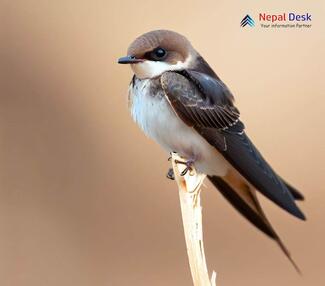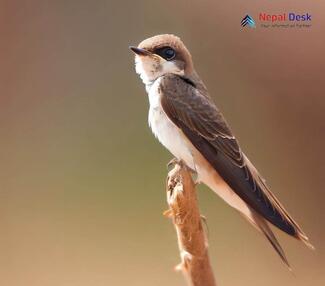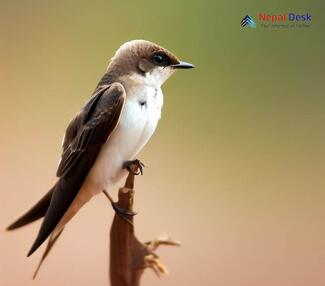Nestled among the breathtaking landscapes and diverse wildlife of Nepal, you will find an intriguing little bird: the Common Sand Martin (Riparia riparia). As one of Nepal's many fascinating avian species, this small, swift-flying bird brings a unique charm to the region. It is also known as Bank Swallow in the Americas and was first described by Carl Linnaeus in 1758 AD. So whether you're a nature enthusiast, a birder, or simply someone intrigued by the world's wonders, take a closer look at the captivating life of the Common Sand Martin.
A Brief Overview of the Common Sand Martin
The Common Sand Martin is a small, migratory bird belonging to the swallow family. It spans across various regions across Europe, Asia, and North America during different periods of the year. However, it is particularly known to inhabit riverbanks and sandy areas in Nepal. Measuring between 12-13 cm in length and weighing just 10-14 grams, these agile birds showcase an earthy brown plumage with a white underside, making them easily recognizable as they dart through the air.
Life Alongside Rivers
One of the defining characteristics of the Common Sand Martin is its affinity for riverbanks and sandy areas. In Nepal, they utilize these banks' vertical faces to dig burrows and create nests. Using their sharp claws and beaks as effective tools, they create nesting tunnels sometimes more than a meter deep. These nests aren't just used once either; common sand martins often return to their breeding ground year after year. This fascinating behavior makes them excellent subjects for study when learning about bird behavior and ecology.
Migration Patterns
As a migratory species, the Common Sand Martin's journey is equally remarkable. In late spring, they begin to arrive in Nepal for their breeding season after having traveled thousands of miles from their wintering grounds in Africa. Following their successful nesting period from May to September, these little birds prepare for their journey back through Asia, Europe, and over the Mediterranean to their safe haven in Africa once more.
Significance in the Ecosystem
The Common Sand Martin is an insectivore, meaning it has a diet primarily consisting of insects. As skilled hunters with excellent acrobatic capabilities, they catch their prey mid-flight, keeping insect populations under control. Additionally, their nesting behavior provides insight into the health of river ecosystems. Abundant sand martin colonies are often an indicator of thriving riverbanks with minimal human disturbance. As such, they function as valuable ecological indicators for scientists and conservationists.
In conclusion, the Common Sand Martin is a fascinating species that grace the riverbanks of Nepal each year. It offers an inspiring glimpse into migration patterns, life cycle intricacies, and ecosystem relationships. So next time you venture into the beautiful landscapes of Nepal, keep your eyes peeled for these enchanting little birds and marvel at one of nature's masterpieces.




